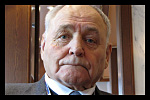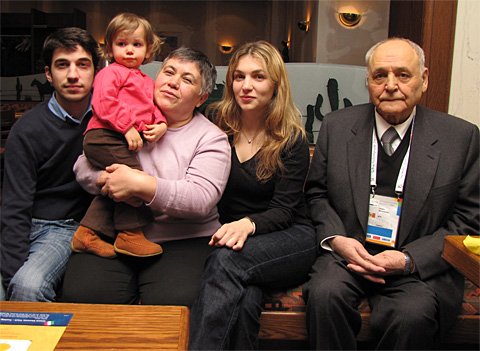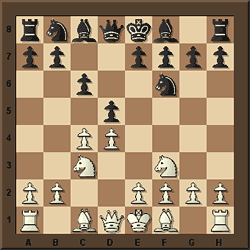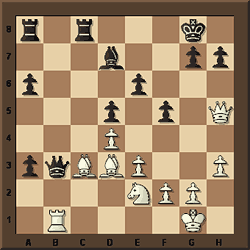



The General Secretary of the Moldova Chess Federation, Feodor Skripchenko (Fyodor Scripchenco) died yesterday at the age of 74. He is mourned by his wife WGM Naira and his daughter IM/WGM Almira Skripchenko. The funeral will take place on Tuesday, May 11, with a memorial service held from 12:00h in the National Chess Club (Schuseva 111, Chisinau) and the procession to the burial site starting from the chess club at 15:00h.

I have known Feodor for a number of years, mainly through his daughter Almira, who is a close friend of my family. The last time I met him was at the end of November 2008 during the Chess Olympiad in Dresden. Both families enjoyed a very nice lunch and afternoon together.

Three generations: French GM Laurent Fressinet, husband of Almira, their
daughter
Ludivine, Naira Agababian-Skripchenko, Almira, Feodor Skripchenko.

At the time Feodor gave me a book on one of his inventions – a variant of chess played on a 10x10 board, and I promised to do an article on it – a promise I sadly did not keep. But it will be done, dear friend, in memory of our wonderful conversations and your infectious enthusiasm for everything surrounding chess.
After that lunch in Dresden, when we said goodbye, Feodor, who was already stricken with cancer, gave me a hug which lasted a little too long. I looked at him and raised my eyebrows questioningly – he shrugged his shoulders. It was a special goodbye, one that leaves me grief-stricken when I remember it today.
Frederic Friedel
This article was published by us on our newspage in June 2006

Fyodor Skripchenko, who is General Secretary of the Moldova Chess Federation
It seems to me that the following story ought to interest not only grandmasters, but also historians of chess theory, and indeed, all chess lovers. It concerns the Slav variation with 4...a6, and in fact the first example of this line in practice, which occurred in the game below. In this game, the Slav Defence was played and I produced a prepared novelty on move four. Using my novelty, the Moldavian analyst Vyacheslav Chebanenko worked out a whole system, which over the past thirty years, has been played successfully at the very highest levels. However, to this day, nobody knows about the original source game, in which the novelty was unveiled. History does not like black holes. It is only right and proper that the chess world should sooner or later learn the truth about the original creator of the move 4...a6! in the Slav!

Feodor Skripchenko in Cisinau in 1972
Chebanenko,Vecheslav - Skripchenko,Feodor [D13]
Kishnev City Championship sf, 17.06.1972
This game was played in the 13th and final round of the Kishnev City Championship semi-final, in June 1972. Both players started the round on 9.5 out of 12, and in the event of a draw, they would share 1-2 places, and would both go through to the final.
1.d4 d5 2.c4 c6 3.Nc3 Nf6 4.Nf3

After White’s fourth move, I offered my opponent a draw, only to receive the reply: “Play a move first!” I thought for a while, and decided to employ my novelty, playing the move 4...a6!? As I had expected, this threw my opponent into turmoil. Chebanenko thought for about an hour, and then said: “OK, draw!”
Given that I had played my novelty, I rather wanted to play on, so I jokingly said to Chebanenko that if he didn’t mind, I would be prepared to continue the game. To my surprise, he agreed. And so our game went on, and after some interesting play, it eventually did nonetheless end in a draw. This is how the game continued:
4...a6!? When I played this move, many other players immediately came up to the board, and thus became witnesses to my novelty. Among them was Nikolay Popov (who nowadays lives in Moscow), Oleg Fenelonov, Boris Nevednichy, Anatoly Lutikov and many others. The chess players of Moldavia know that this game was the real source of the move 4...a6, even if the rest of chess world does not.
5.cxd5 cxd5 6.Bf4 Nc6 7.e3 b5 8.Rc1 Qb6!? Not the best, of course, but I had my prepared lines, and besides, I wished to play for a win. 9.Bd3 e6 10.0-0 Bb7 11.a3 Be7 12.Ne5 0-0 13.Qe2 Rac8 14.b4 Nxe5 15.Bxe5 Ne4 16.Bxe4 dxe4 17.Qg4 f6 18.Bf4 f5 19.Qg3 Bf6 20.Be5 Bxe5 21.Qxe5 Rfd8 22.a4 bxa4 23.Nxa4 Qd6 24.Qxd6 Rxd6 25.Rxc8+ Bxc8 26.Nc5 Rb6 27.Rb1 Kf7 28.Kf1 e5 29.dxe5 a5 30.b5 Be6 31.Ke1 Bc4 32.Rc1 Bxb5 33.g4 g6 34.Rb1 h6 35.h3 Ke7 36.gxf5 gxf5 37.Na4 Rb7 38.Nc5 Rb8 39.Na4 Rb7 40.Nc5 ½-½. [Click to replay]
I will take this opportunity to show you one further game, played some 20 years after I employed my novelty against Chebanenko. Playing in Rumania, with the black pieces against a local player, I again employed the Slav, and one of the variations I had worked out, involving the move 4...a6. But here I played a6 as early as move 3, trying to lure my opponent from well-known paths. Thanks partly to this, the Rumanian master “helped” me to create the best tournament game I have ever played, one for which I won the brilliancy prize in the tournament concerned. In this game, I sacrificed a whole set of pieces – first two pieces for a rook, then queen for rook, and on the followed move, a further exchange. This game also proved to be my last – since that day, I have never played in another official tournament.
It all happened when, in 1993, my daughter Almira was invited to play in Odorhe-Sekuesk. I had not played for about 20 years by that time, and I accompanied Almira to the tournament in a non-playing capacity. But it turned out that the organisers and journalists wanted father and daughter to play in the tournament together. The press had already prepared their headline: “The daughter outstrips the father!” However, to my mind, I played very well, scoring 6.5 out of 9. Here is this historic game:
Bencze,J - Skripchenko,Feodor [D10]
Odorhei-Secuesc, 17.06.1993
1.d4 d5 2.c4 c6 3.Nc3 a6! 4.cxd5 cxd5 5.Bf4 Nc6 6.e3 Nf6 7.Bd3 b5 8.Rc1

8...Qb6. Of course, the move 8…е6 was objectively stronger, as shown by the variation 8...e6 9.Nf3 Be7 10.0-0 0-0 11.Na4 Bb7 12.Nc5 Qb6 13.Ne5 Rfc8 14.Ng4 Ne8 15.Qb3 Nd6. However, the move 8…Qb6 also deserves attention, because it leads to some interesting possibilities for Black.
9.Nge2 e6 10.0-0 Be7 11.h3 0-0 12.a3 Na5 13.Nb1 Nc4 14.b3 Nxa3 15.Nxa3 Bxa3 16.Bc7 Qb7 17.Ba5 Ne8 18.Qc2 f5 19.Ra1 b4

20.Ng3?–/=. Stronger was 20.Nc3! Bd7 21.Nb1 Nd6 22.Nxa3 bxa3 23.Rfc1 (23.Rxa3 Rfc8 24.Qd2 Bb5=) with roughly equal chances. But my opponent had prepared a “trap”, winning two pieces for a rook. I decided to fall into it. 20...Bd7 21.Qe2 Nd6 22.Ra2 Nb5 23.Qh5 Nc3 24.Rxa3 bxa3 25.Bxc3 Qxb3 26.Ne2 Rfc8 27.Rb1.

Having two powerful bishops for a rook, and a powerful position on the queenside, White was looking forward to a quick victory. However, an unpleasant surprise awaited him: 27...Rxc3!! 28.Rxb3 Rxb3 29.Nc1. And here White got another surprise: 29...Rxd3! Of course, the rook cannot be taken, since Black queens a pawn. There followed: 30.Qe2 Rc3 31.Na2 Rb3 32.Qc2 Rab8 33.Qc7 R8b7 34.Qc5 Kf7 35.Kh2 Bb5 36.Nc1 Rb1 37.Qxa3 Bc4 38.Kg3 Kg8 39.Kf3 R1b2 40.g3 h6 41.g4 fxg4+ 42.Kxg4 Rxf2 43.Qd6 Rf6 44.h4 Rg6+ 45.Kh5 Kh7 46.Qe5 Rb2 47.e4 Rgg2 48.Qc7 Bb5 and White resigned. 0-1. [Click to replay]
This game won the first brilliancy prize in the tournament. Many players congratulated me on such a splendid achievement, which I dedicated to all chess lovers. This is how at one time your humble servant, and the creator of the 4...a6 system in the Slav, used to be able to play chess.
Translated from the Russian by Steve Giddens